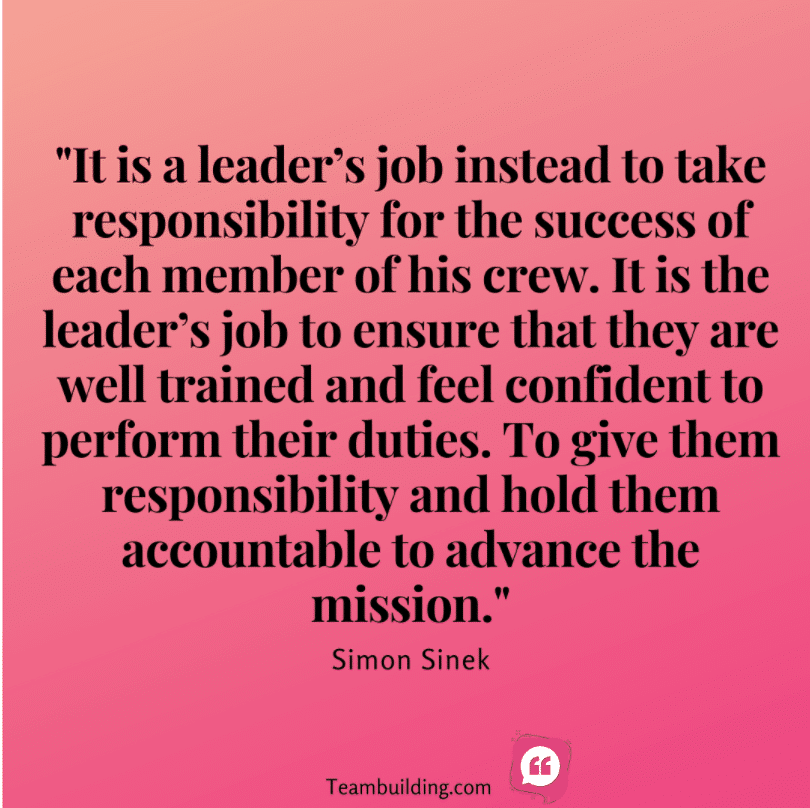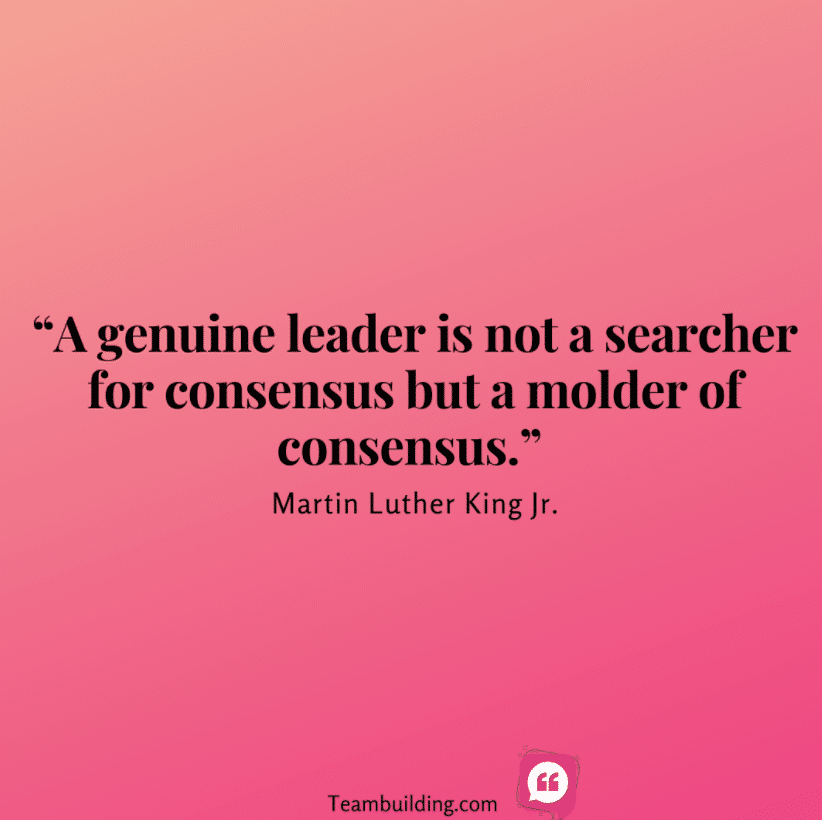You found our guide to team building leaders.
Team building leaders are individuals who oversee teams and keep groups functioning effectively. These leaders could be managers or team members who step up and take charge. These figures do not merely give orders, but rather help the group improve teamwork.
These individuals exhibit strong team building management, team management skills and show the signs of good leadership and collaborative leadership.
This article covers:
- What is team building in leadership?
- Why is team building important in leadership?
- Why is leadership important to a team?
- How does leadership influence teamwork?
- What role does a leader play in team building?
- What makes a good team leader?
Here is everything you need to know about effective team leadership.
What is team building in leadership?
Team building is the act of meaningfully connecting teammates in a manner that improves the group’s performance and morale. Leaders typically shape the process by assessing the team’s strengths and weaknesses and planning activities that enhance group dynamics.
Understanding team personalities, skills, and interactions helps a leader make smart decisions that further organizational goals. One of the most important factors in team leadership is the ability to assess a team and identify areas of potential growth.
When a leader discovers a skills gap or the opportunity for a stronger bond, that supervisor can implement team building exercises to remedy the disconnect. Team leaders can also take proactive measures to boost team performance, transforming groups from acceptable to exceptional.
Here is a list of leadership skills that support team building and ways to understand leadership vs management.
Why is team building important in leadership?
Put simply, leadership is important in team building because leaders guide teams. Leaders do not merely give instructions to individuals, but rather decide the direction of the group by informing the collective action. Teammates then bring that vision to life by working together.
Team members can also promote group values and ideas in a manager’s absence. Leaders cannot oversee every action or part of the process, but the rest of the team can pick up the slack. Other group members can support and encourage colleagues and champion a positive mindset. Teammates lighten the load of a leader by taking on tasks like delegation and morale management.
In this way teams become a leader’s tools, and all tools need special care. By building up and polishing a team’s capabilities, a leader assembles a toolkit fit to tackle any task.
Why is leadership important to a team?
The leader is the driving force behind the team. Team members may take an active role in forming relationships, establishing goals, and delegating duties, but the leader serves as the deciding factor in all matters.
Great crews are diverse, with each member offering up distinct opinions and experiences. These differing perspectives can both enrich and lengthen the decision making process. Teammates tend to have relatively equal footing, which means deliberation could drag on if team members cannot agree. Leaders possess the power to settle such matters and choose a course of action. Though all group members have a say, leaders hold the final say. Without this determinant, teams would make much slower progress. Leaders ensure that all team members are on the same page and move in one direction.
How does leadership influence teamwork?
A leader sets the tone of the operation and greatly influences a group’s temperament and style. Demanding, disorganized, or untrustworthy leaders can breed frustrated and dysfunctional teams. Meanwhile, open, flexible, and diligent leaders are likely to produce conscientious and courageous teams.
The level of compassion that colleagues show each other often reflects the level of compassion that a leader shows to subordinates. Similarly, a leader’s confidence rubs off on employees. Nervous or overly critical leaders may discourage teammates from taking risks, while calm and trusting leaders empower employees to tackle new challenges.
Leaders who value teamwork inspire employees to collaborate, while the followers of lone-wolf leaders tend to adopt similarly individualistic approaches. By prioritizing group harmony and achievement, a leader teaches teams respect and cooperation.

What role does a leader play in team building?
First and foremost, leaders ensure that all members of the team have the skills needed to succeed and a clear understanding of group goals. In Leaders Eat Last, Simon Sinek writes, “It is a leader’s job instead to take responsibility for the success of each member of his crew. It is the leader’s job to ensure that they are well trained and feel confident to perform their duties. To give them responsibility and hold them accountable to advance the mission.”
In addition to mentoring individuals, a leader employs team building best practices to form and shape the team into a cohesive unit.
Leader team building duties include:
- Assemble teams
- Set goals and expectations
- Assign roles and responsibilities
- Plan and lead team building activities
- Mediate conflict
- Foster relationships and trust
- Monitor, maintain, and boost morale
- Facilitate communication
- Assess progress and growth
- Sustain focus
- Create and uphold a sense of group identity
A leader molds and remolds the team to ensure that the group can function effectively and achieve favorable results.
What makes a good team leader?
Good leaders acknowledge that teamwork is not automatic, but rather a conscious effort. Instead of assuming that teams will form naturally, smart leaders act with intention. By taking stock of the team’s needs, a leader can plan practical and impactful team building activities.
A good leader models ideal teamwork by respecting all team members, earning and outwardly displaying trust, encouraging discussion, actively listening, delegating tasks, and recognizing accomplishments.
The most respected leaders act with integrity and confidence, inspiring others to strive for high standards.
Since leaders serve all team members, these managers should not allow biases or personal feelings to cloud judgment or inform behavior. The ideal leader is fair to all teammates and chooses merit over favoritism.
A truly effective leader empowers staff and encourages all employees to take ownership of the work instead of merely providing instruction.
Lastly, a leader functions as a member of the team. The best leaders give support, not orders. They are open to hearing ideas and allow group member input. Though these individuals sit higher in the chain of command, they treat teammates more like partners than subordinates. Great leaders see themselves as collaborators, not commanders.

See more examples of good leadership and learn about leadership activities.
Final Thoughts
While team building depends on the cooperation of all group members, the role of a leader is especially important. A good leader promotes teamwork and models ideal behavior for the team. This individual assesses the team’s abilities and draws out the group’s true potential by consciously building relationships and sharpening skills. A smart leader knows that putting in effort to strengthen teams will pay off in the form of passionate and productive employees that support each other and the company. The leader creates environments in which teams can thrive.
Next, check out this list of leadership books, this one with books for new managers and these virtual leadership ideas.
We also have a guide to servant leadership and one on good leadership qualities to have.

